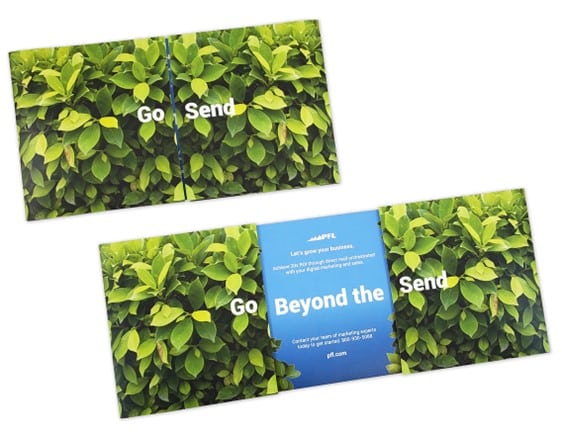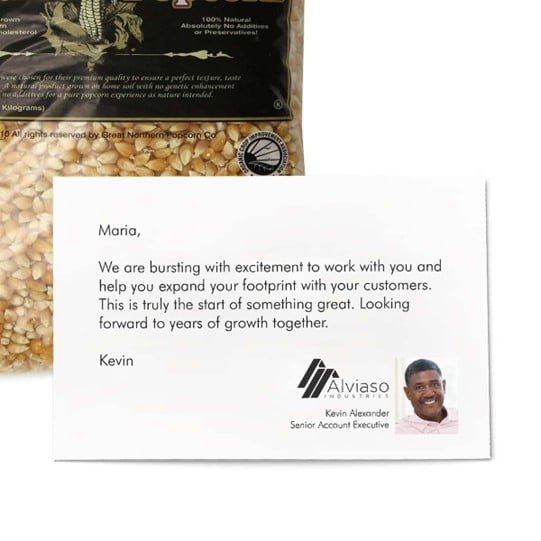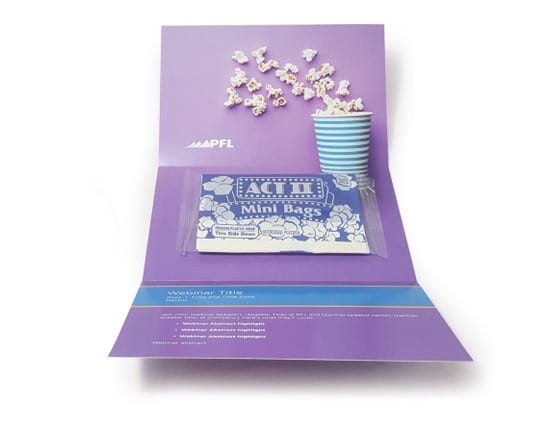
In a world where online marketing is becoming ubiquitous and, for many consumers, overwhelming, marketers can stand out from the crowd using direct mail.
But what is direct mail? And is it applicable to all stages of the marketing funnel?

Direct mail is a “physical printed piece that is sent via USPS directly to recipients’ mailboxes,” says Kristi Eby, a National Account Executive at Printing for Less. It can take the form of written letters, catalogs and brochures, coupon books, surveys, and more. The advantage of a physical form of marketing like this is that it enables brands to connect with their existing and prospective customer base in ways that go beyond just written communication.
With open rates from 57.5%-85% and an average return of $4.09 for every $1.27 spent, it’s no wonder that direct mail marketing remains a powerful tool for businesses. As we’ll see, direct mail marketing can drive results at every stage of the customer lifecycle.
Stage One: Awareness
The first step in any marketing campaign is to identify the target customer. This can be done using approaches such as look-alike analysis, which builds a picture of the target customer based on the characteristics of the existing customer base. Alternatively, a large group of people can be targeted, perhaps in a particular geography, quickly and easily by purchasing a mailing list or by mailing to an entire zip code.
Once this target audience has been identified, direct mail can quickly establish brand awareness with a wide base.
“At the beginning of the customer lifecycle, companies will use direct mail to raise awareness of the brand and inform them of their business,” says Kristi. “These are usually sent to larger quantities to spread that awareness as far as possible.”

It pays to think carefully about the messaging of this initial outreach. This is the first impression that prospective customers will have of a new brand, so it better be a good one!
Stage Two: Consideration
As all marketers know, the first contact often gets the worst results. Awareness mail is about ensuring that your logo and offering will look a little more familiar and hold attention a little bit longer the next time it appears in your prospects’ mailbox.
When that happens, it’s time to get prospects to consider the offering in more detail. There are lots of ways that direct mail can help achieve this. Content that demonstrates the value of a product via case studies or testimonies can build the audience’s understanding of the value proposition. Similarly, sending a catalog makes prospects aware of what they could purchase.
Direct mailing doesn’t have to ignore more technological approaches. Including a unique URL or a QR code in a second round of direct mail can enable tracking of which, and how many, prospects respond at this stage of the campaign. As well as monitoring of middle-of-the-funnel metrics, this can provide information on the most engaged prospects for retargeting in future campaigns.
Ambre Zachmann, Ecommerce Marketing Specialist at Printing for Less, recommends exploiting the physical characteristics of direct mail to make messaging stand out during the mid-funnel stages of a campaign. For example, a “uniquely folded mailer [will] allow yourself more real estate to sell your company while providing a fun, engaging experience.” Similarly, oversized postcards, envelope mailers, or anything of an abnormal size will stand out in the mail and encourage more viewing time.

Being more informative than competitors’ efforts will make your direct mail stand out. “Significantly change the paradigm of the ‘company newsletter,’” urges Wes Kirk, Printing for Less Mailing Expert. “Make it have value, purpose, and meaning.”
The consideration stage is your opportunity to convince prospects of your product’s value compared to that of competitors. Take full advantage; be as informative and educational as possible, and communicate how your offering addresses its specific pain point.
Stage Three: Conversion
The next stage of the marketing funnel is all about pushing interested prospects over the line and converting them into paying customers.
One obvious way that direct mail can help here is via coupons or limited-time offers. Like a unique URL or QR code, sending coupons enables measurement of a campaign’s effectiveness by quantifying uptake.
Coupons also help convince prospects that now is a good time to try out your product. Limited-time offers (which can be combined with coupons) also create a sense of urgency and a fear of missing out on a bargain.
A slick, catchy call to action is crucial when attempting to convert prospects. Give careful consideration to this when crafting conversion-focused direct mail campaigns.
Stage Four: Loyalty
While direct mail can lead new prospects to your shopfront, it’s unlikely to be worth the investment just for a round of one-off purchases. To truly unlock its value, direct mail can be used to turn first-time buyers into loyal, repeat customers.
There are various ways in which this can be achieved. Integrating a physical thank-you note or a feedback form into the CRM process means that a first-time buyer will receive a message from you shortly after their first purchase. If written well, this has the potential to delight the customer, make them more likely to return the next time they are buying, and (in the case of feedback forms) provide vital information on what has worked well and what can be improved about the customer journey so far.

As during the conversion stage, sending out coupons can encourage audiences to make a repeat purchase. Establishing this pattern early offers the best shot of forming a habit where new customers select your brand to address their needs.
Depending on how much information you’ve collected about prospects during the preceding phases, you may also be able to add a personal touch with a birthday card during their birthday month. Approaches like this are the cornerstone of true brand loyalty and create a close, authentic relationship between you and your customers.
Stage Five: Advocacy
Achieving this level of brand loyalty with customers lays the groundwork for them to start doing your next round of marketing for you. Which can be fostered, and rewarded, through direct mail.
For example, later rounds of direct mail campaigns can offer incentives for your customers to refer their friends, family, and colleagues. Referrals can be rewarded with gifts or coupons, again sent through the mail. When contacts at B2B clients change companies, consider congratulating them with a welcome gift to their new office; this is a really natural way to lead into a prospecting call with their new employer.
Your most dedicated brand advocates can even be rewarded with free samples of new lines, or advanced notice to order them. With customers like these, it really pays to get creative and think of all the ways possible that delightful customer experiences can arrive unexpectedly in their mailbox.

The key is to ensure that you always remain in your most dedicated customers’ thoughts. “Stay top of mind with valuable information your customers would benefit from,” says Ambre.
At any stage of the customer lifecycle, direct mail marketing has the potential to enhance marketing efforts. It can increase open rates and conversions, and greatly improve customer loyalty.
During an era in which the vast majority of marketing emails are deleted without being opened, consider the impact that a well-designed, creative direct mail campaign could have on your marketing efforts.
